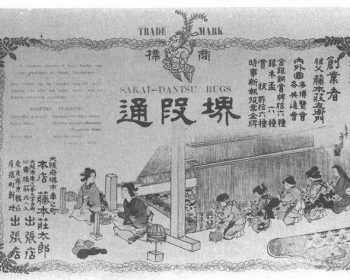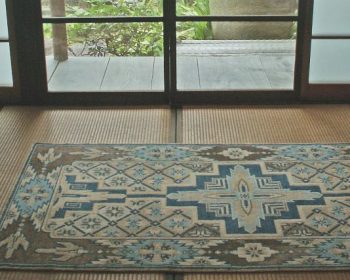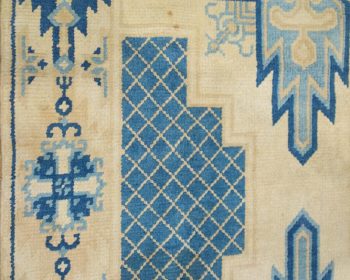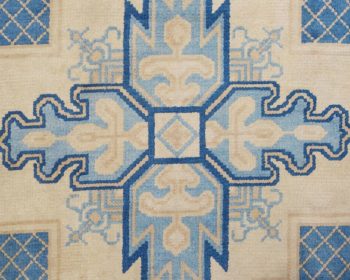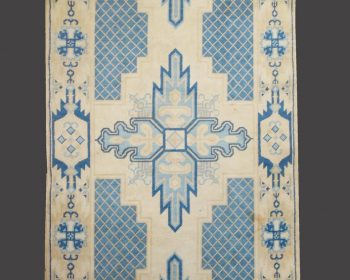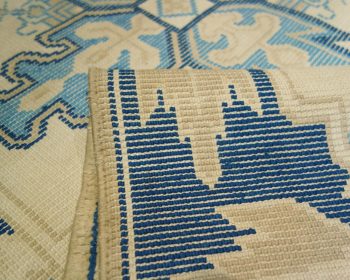A Japanese “Dantsu” rug
A “Dantsu” rug
Japan is very well known for its elegant and sophisticated textiles, woven in silk or cotton but very few is known about the Japanese rug production of “Dantsu”, hand knotted rugs in cotton, mainly produced in the Meiji-Periode (1868-1912) until the end of Taisho periode (1910-1925).
The “Dantsu” (means: rug) traditionally had been made in cotton, a material very suitable for the Japanese humid climate. These items, highly appreciated by the wealthy classes, had been used during the tea ceremonies, spread out in front of the tea table and used as seats. The “Dantsu” has two traditional sizes: the “Zabuton” size and the “Tatami” size. They also had been used to cover the floor of the temple halls during winter time.
Only few patterns were applied, expression of a strong bound to tradition. The chosen designs have precise meanings.
The pattern “Riken Mon” means: Sharp word. This pattern, which has existed among “Ako Dantsu” through the ages, has some variations. Riken literally means a sharp sword, and it also means the Buddha’s wisdom to defeat worldly desires and evil spirits and defeating the evil.
Some other notions regarding “Dantsu” history:
“Dantsu” rugs (woven, but not knotted) were already produced during the Edo period (1603-1848), especially in Nabeshima were they had been used as gifts to the important Shogun families of the Nabeshima clans.
From the 17th ct. on also knotted Chinese “Dantsu” had been imported but the woolen pile was not very suitable for the Japanese humid climate.
In the 19th ct. the Japanese “Dantsu” production with knotted cotton “Dantsu” started in several cities, the main centre were Nabeshima, Sakai and Ako.
In Sakai, it seems, the production started in 1831, influenced by early Nabeshima “Dantsu” and Chinese “Dantsu”.
Ako was the heart of salt production. From 1849 Kojima Naka started to install a “Dantsu” production which made Ako soon a huge industry with many workshops, employing the former salt workers. The Aka “Dantsu” were of high quality in technique and design and became the best “Dantsu” of the market.
The production increased and around 1900 the Japanese “Dantsu” workshops exported commercial rugs and carpets in large quantities to the US, Australia and also London. Designs and sizes followed the taste and request of the importing countries. The production continued until the beginning of the 2nd World war.
For other notions regarding Ako “Dantsu” Google culturalinstitue:
https://www.google.com/culturalinstitute/beta/exhibit/ako-dantsu-rugs/dgJSOwU9qDPmKw?hl=en

